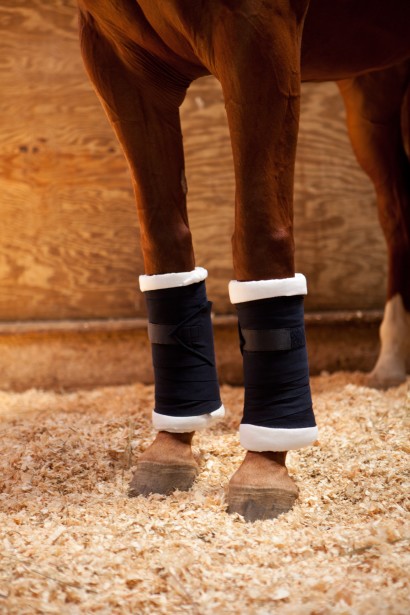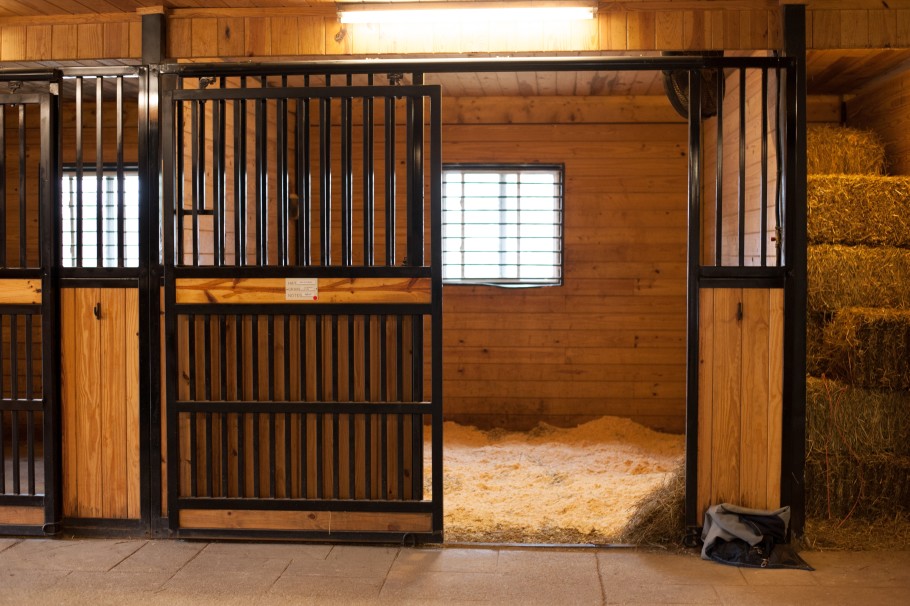Guide to the Best Types of Horse Bedding
Updated September 25, 2023

Ensuring the comfort and well-being of our equine companions is an essential responsibility for every thoughtful horse owner. From nutrition to exercise, every aspect of their care matters. Among these considerations, knowing horse bedding types is crucial in promoting optimal comfort and health. The perfect horse stall bedding choice goes beyond providing a cozy resting space; it enhances our beloved horses' physical and mental well-being.
Why Do Horses Need Bedding?
Horses that live in stalls require bedding to help cushion their bodies and reduce the risk of developing sores or discomfort from lying on hard surfaces. Additionally, stall bedding for horses is crucial in maintaining cleanliness, reducing bugs, absorbing moisture, and controlling odors, creating a healthier and more hygienic living space.
Absorbency and Hoof Health

Absorbent bedding is vital in maintaining a clean, dry environment for hoof health. When bedding materials effectively absorb moisture (such as urine), it helps prevent the hooves from being constantly exposed to damp conditions, which can lead to issues like thrush, white line disease, or softening of the hoof. Bedding that soaks up moisture also minimizes the risk of bacterial and fungal infections, promoting overall hoof health and soundness.
Respiratory Health
Proper bedding is crucial for maintaining the respiratory health of horses. By using suitable bedding materials, such as dust-free options, horse owners can minimize the presence of airborne particles which may irritate the respiratory system. These particles, including dust and mold spores, can contribute to respiratory issues. Providing a clean and well-maintained bedding environment helps reduce the risk of respiratory disorders and promotes healthier breathing.
Comfort and Rest
Horses require bedding to ensure their comfort and promote restful sleep. A soft, cushioned surface alleviates pressure on their joints and muscles. By creating a cozy and inviting environment, bedding allows horses to lie down, stretch out, and relax, which is essential for their physical and mental well-being. Adequate rest is crucial for horses' overall health and performance, and the right bedding plays a significant role in facilitating comfortable and restorative rest.
Common Types of Equine Bedding

Straw Bedding for Horses
Straw bedding is popular for barns because it is a natural product readily available in most places. Straw provides a soft, insulating surface that offers comfort and support for horses. However, it's essential to consider the pros and cons of straw bedding to make an informed decision.
Straw is not recommended for horses with or at risk for respiratory issues as it can be dusty. It’s not very absorbent either so it could be better at soaking up urine. Many horse owners who use straw will place it over shavings or sand to help with absorbency and drainage. The alternative is to bed a straw stall very deep so the urine drains down to the bottom layer and stays away from your horse’s hooves.
Wood Shavings as Horse Bedding
Wood shavings efficiently absorb moisture, keeping the environment dry and reducing the risk of skin irritations and bacterial growth. They also contribute to good hoof health by providing a clean and stable surface for horses to stand on.
They can be very light so if your barn is windy or you are using them in a horse trailer, they will fly around. They can also be quite dusty, so they are not ideal for horses prone to respiratory issues.
If you're considering wood-shaving bedding, it's important to understand the different types available and their specific characteristics. Make sure to buy safe wood shavings, as black pine shavings are toxic to horses. The quality of the shavings can also vary significantly, even from the same manufacturer.
Sawdust Horse Bedding
Sawdust is highly absorbent due to its small size. It is readily available in many locations, especially in the Northeast and Midwest. If you clean your stalls regularly, sawdust bedding can be an excellent option to keep stalls dry. However, pathogens and bacteria grow quickly in sawdust, so it cannot be left dirty for too long. It can also be very dusty, which is not ideal for horses prone to breathing problems.
Wood Pellets for Horse Bedding
Unlike wood shavings which vary in quality, wood pellets are a consistent, reliable type of bedding. Made from compressed sawdust, wood pellets provide a highly absorbent and dust-free solution. When exposed to moisture, the pellets break down and create a soft, comfortable bed. The absorbency of wood pellet bedding helps maintain a clean and dry environment, promoting healthy hooves and reducing the risk of bacterial growth. Additionally, wood pellets are easy to handle, store, and dispose of, making them a convenient choice for horse owners.
Shredded Paper
Shredded paper has emerged as a unique and eco-friendly alternative for equine bedding. It offers several advantages, including excellent absorbency and moisture control. Shredded paper efficiently soaks up moisture and is dust-free, making it suitable for horses with respiratory sensitivities or allergies.
As a sustainable choice, shredded paper is recyclable or compostable, reducing waste and environmental impact. Shredded paper is very lightweight and will blow around in a windy barn compared to other types of bedding. It can also be prone to mold if not cleaned regularly.
Peat Moss
Peat moss is a natural and popular option for bedding due to its remarkable absorbency and soft texture. The absorbency and cushion make it an excellent choice for senior horses and those with allergies, heaves, or inflammatory airway disease.
Additionally, peat moss has natural antimicrobial properties, contributing to a clean and hygienic environment. However, peat moss bedding can be costly and difficult to get in certain locations. It also has a very dark natural color that may potentially stain a lighter horse’s coat, so it might not be the best choice for a white or grey show horse.
Rice Hulls
Rice hulls are lightweight and less dusty than shavings. Similar to other bedding types, rice hulls are dust-free. Unfortunately, they are not very absorbent and are only recommended as bedding in stalls with good drainage or combined with an absorbent bedding. Rice hulls are a natural and sustainable choice, as they are a byproduct of rice processing.
Choosing the Right Equine Bedding

Choosing the right bedding is critical, as it directly affects your horse’s comfort, health, and overall well-being. Each horse has unique needs and sensitivities to consider when selecting bedding materials. Factors such as absorbency, dust levels, texture, bacterial growth, and allergens play a significant role in determining the most suitable option.
It’s important to be aware of potential risks associated with certain bedding materials, such as the habit of eating bedding. You can ensure a comfortable and safe environment by making an informed choice and considering your horse's needs.